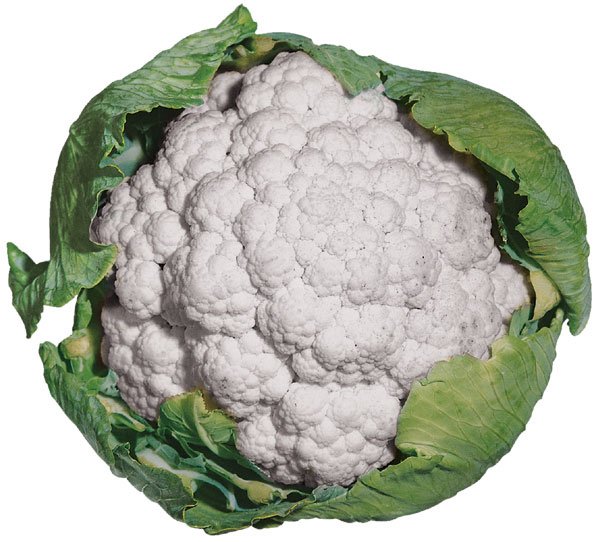Just about this time every year, local home gardeners may become
inundated with excess tomatoes, peppers, zucchini and other summer
vegetables. Ah, but while we’re enjoying the fruits of our labors,
remember that we’re blessed with a mild fall/winter climate that is
perfect for growing
– you guessed it – winter vegetables!
Just about this time every year, local home gardeners may become inundated with excess tomatoes, peppers, zucchini and other summer vegetables. Ah, but while we’re enjoying the fruits of our labors, remember that we’re blessed with a mild fall/winter climate that is perfect for growing – you guessed it – winter vegetables!
And it’s not too early to start thinking about fall/winter vegetables. I always laugh when I talk to gardening friends back East, who will soon be getting ready to put their gardens to bed. Out West, we have a whole new season to plant!
Many of the vegetables that grow well in summer also do well in winter in our area. Even better, they grow with fewer pest problems from September through February. The cooler days mean that lettuce stays sweet and doesn’t go to seed quickly, green beans become more tender, cauliflower creamier and greens like spinach and kale get sweeter still.
Of course, other vegetables which don’t grow in the summer will also do well in our mild winter climate.
For the most part, we’re talking about a number of row crops. Things like lettuce, cabbage, cauliflower, spinach, kale and Asian veggies like bok choi. You can also plant asparagus, artichokes, beans, broccoli, carrots, radishes, Swiss chard, turnips and more.
A rundown of winter vegetables shouldn’t omit Gilroy’s own specialty – garlic. Garlic is a very long-tenured plant in that it needs more than one season to grow. You can plant garlic anytime after summer, and you’ll be harvesting your cloves right around Garlic Festival time next July.
Garlic is easily started by breaking off the cloves of whole garlic bulbs. The garlic bulbs you find in the grocery store will work just fine.
Thanks to the fact that our late August weather is still plenty warm, these fall/winter vegetables can easily be sown directly in our gardens. To say the least, we’re getting some of our warmest weather right now!
Give carrots, spinach and other direct-seeded vegetables a helping hand by planting the seeds in a shallow furrow and covering them with finely screened compost or planting mix. The fluffy topping will not crust over.
Fall crops will need plenty of water, especially if planted during our Indian Summer weather of September. If you start later – say, November – you may rarely need to water. Remember that fall/winter vegetables can be planted anytime between now and next February or so. There is no real rush, but it is important to improve your garden soil before planting.
After a long, hot summer, most garden soils are pretty much used up about now. That’s why it’s important to work in organic compost, green manures, redwood soil conditioner, gypsum, etc., before you start an entirely new fall/winter veggie garden. If you didn’t or you think your garden soil could use some rejuvenation after a hard summer of growing, just try turning in a couple inches of garden soil with a shovel. You’ll find how hard and dry things can get.
If you have a chance, rototill these soil amendments into your soil. Gas-powered rototillers can be rented by the hour if you don’t have access to one. Tilling the soil really will do wonders.
I also like to foliar feed my just-started plants with fish emulsion, compost tea or liquid seaweed. Even a little Miracle-Grow will do. If it doesn’t rain, continue watering once or twice a week.
Although pest populations usually dwindle in fall and winter, it’s a good idea to check young seedlings routinely for the first signs of insect damage or disease. Insects love to hide in the heads of cabbages. Caterpillars and cabbage worms also can do damage. You can place paper or metal collars around individual plants for protection or spray with products containing Bacillus thuringiensis (Bt). The latter is a type of non-chemical spray that actually affects caterpillars’ and worms’ digestive systems, eventually starving them to death.
Of course, snails and slugs never seem to take a break, so hand-pick or bait accordingly. If you have pets or small children, I’ve had great success with a snail bait called Sluggo. It is an iron-phosphate-based bait that isn’t poisonous like most other baits. It costs a little more than regular Bug-geta, but your peace of mind is worth it! Meanwhile, with older children, the old “nickle-a-snail” game is a great way to give your kids an activity and clean up snails and slugs at the same time.
If don’t have any inclination to grow vegetables in winter, you may want to sow a cover crop instead. Things like Italian fava beans will provide a number of benefits. It will prevent soil from washing away, they’ll keep weeds under control and also provide nutrients and organic matter to your soil. Come spring time, simply rototill the fava beans, plants and all, back into your soil for a natural nitrogen source.
So, there you have it. Take advantage of our mild fall/winter weather and grow vegetables year-round. Your friends back East will hate you for it!














